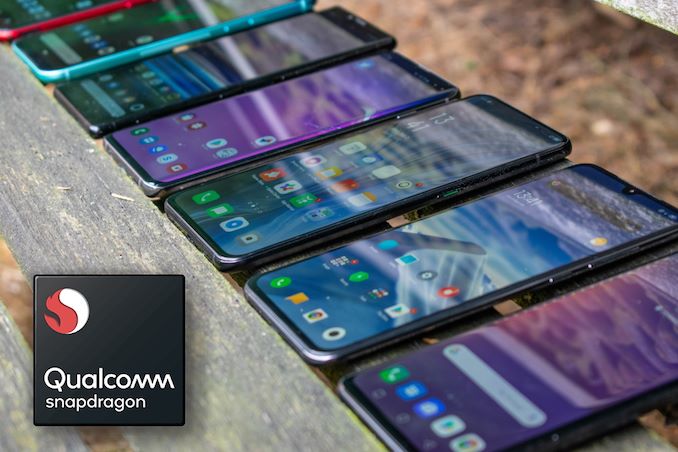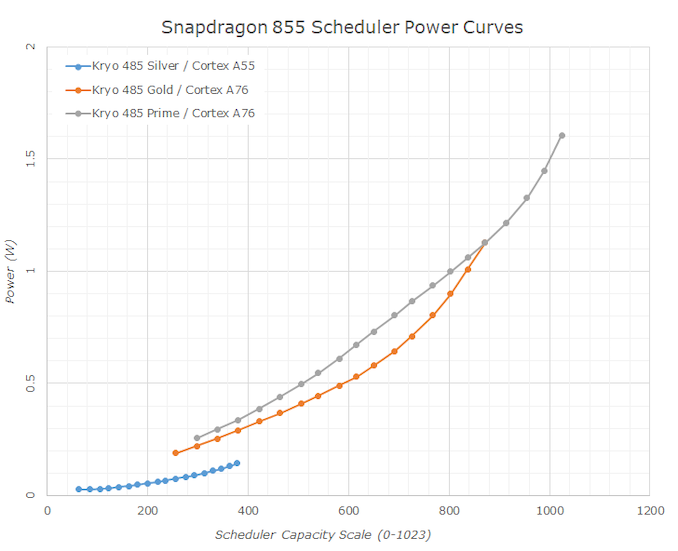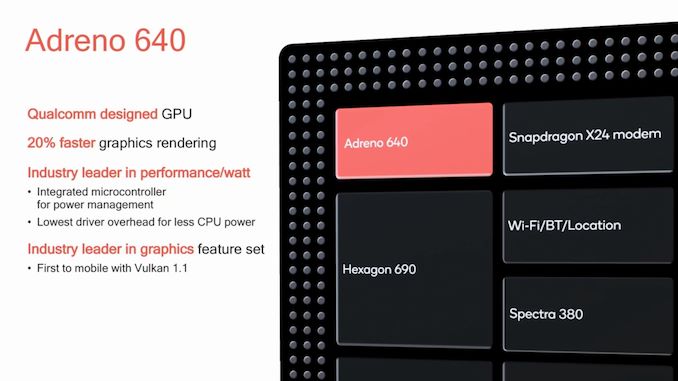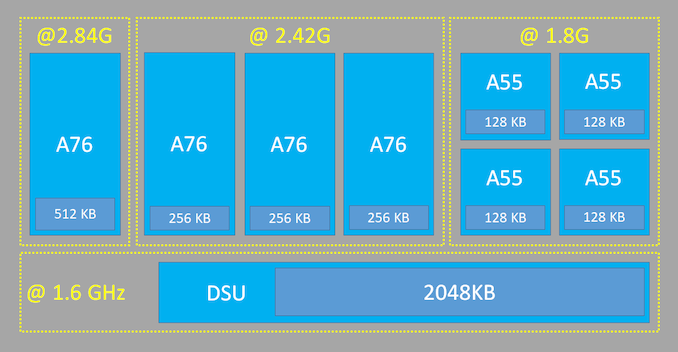The Snapdragon 855 Phone Roundup: Searching for the Best Implementations
by Andrei Frumusanu on September 5, 2019 8:30 AM EST
Over the last few years we’ve seen a lot of changes in the mobile market when it comes to the internal hardware of devices. At the heart of every smartphones sits the SoC, which dictates almost every aspect of a device’s experience. Qualcomm has played a major role in shaping the smartphone, thanks to its widely-used Snapdragon platform. The company has had its ups and downs over the last few years, but particularly starting with the Snapdragon 835 from a couple of generations ago we’ve seen some continued and very robust execution from the chip vendor.
This year, Qualcomm’s flagship SoC was the Snapdragon 855. The chip is well known and has been powering the vast majority of Android devices this year, bar a few exceptions. With so many options from various vendors, an interesting question arises: who has managed to do the best implementations in getting out the most out of the silicon? To help settle that question, today we’re doing a smartphone roundup – we're taking a look at device performance from a slew of different S855 devices from various vendors, while investigating how software and hardware designs can change a device’s experience on the very same silicon.
| Qualcomm Snapdragon Flagship SoCs 2018-2019 | |||
| SoC |
Snapdragon 855 |
Snapdragon 845 | |
| CPU | 1x Kryo 485 Prime (A76 derivative) @ 2.84GHz 1x512KB pL2 3x Kryo 485 Gold (A76 derivative) @ 2.42GHz 3x256KB pL2 4x Kryo 485 Silver (A55 derivative) @ 1.80GHz 4x128KB pL2 2MB sL3 @ 1612MHz |
4x Kryo 385 Gold (A75 derivative) @ 2.8GHz 4x256KB pL2 4x Kryo 385 Silver (A55 derivative) @ 1.80GHz 4x128KB pL2 2MB sL3 @ 1478MHz |
|
| GPU | Adreno 640 @ 585MHz | Adreno 630 @ 710MHz | |
| Memory Controller |
4x 16-bit CH @ 2092MHz LPDDR4X 33.4GB/s 3MB system level cache |
4x 16-bit CH @ 1866MHz LPDDR4X 29.9GB/s 3MB system level cache |
|
| ISP/Camera | Dual 14-bit Spectra 380 ISP 1x 48MP or 2x 22MP |
Dual 14-bit Spectra 280 ISP 1x 32MP or 2x 16MP |
|
| Encode/ Decode |
2160p60 10-bit H.265 HDR10, HDR10+, HLG 720p480 |
2160p60 10-bit H.265 720p480 |
|
| Integrated Modem | Snapdragon X24 LTE (Category 20) DL = 2000Mbps 7x20MHz CA, 256-QAM, 4x4 UL = 316Mbps 3x20MHz CA, 256-QAM |
Snapdragon X20 LTE (Category 18/13) DL = 1200Mbps 5x20MHz CA, 256-QAM, 4x4 UL = 150Mbps 2x20MHz CA, 64-QAM |
|
| Mfc. Process | TSMC 7nm (N7) |
Samsung 10nm LPP |
|
The Snapdragon 855 is Qualcomm’s first chipset to come manufactured on TSMC’s 7nm process node, giving the chipset a much-heightened degree of power efficiency, which in turn enables it to have achieve a high degree of performance.
The chip is powered by a derivative of Arm’s Cortex-A76 and Cortex-A55 cores. Qualcomm markets these as the Kryo 485 cores. The company makes use of Arm’s “Built on Cortex Technology” license which allows vendors to request changes to some of the microarchitectural configurations of the “standard” IP core. In the case of the Kryo 485, Qualcomm has revealed that it has raised the re-order buffer of the core from 128 to a higher undisclosed figure. It’s to be noted that the successor of the Cortex-A76, the A77, comes with a 160 entry ROB, and given that the RTL is still designed by Arm, I’d wager Qualcomm was an early beneficiary of this work. Other improvements are found in the prefetchers which are said to be tuned for more web-browsing type of workloads.
The key aspect of the Snapdragon 855’s CPU complex is the fact that it’s a 1+3+4 setup. The single large “Prime” performance core runs at up to a 2.84GHz clockspeed and uses a larger 512KB L2 cache, whereas the “Gold” or middle cores run at up to 2.42GHz and have 256KB L2 cache implemented. The bigger cores are paired with four A55 derived cores running at up to 1.8GHz and serve as the efficient workhorses of the chip. The whole complex is tied off with a 2MB L3 cache running at up to 1.6GHz.

The reason for the 1+3 configuration is that Qualcomm achieves better a better silicon area footprint while also min-maxing any given workload's power efficiency and maximum single-threaded performance. The Prime core is implemented via more relaxed transistor library which enables it to reach higher frequencies at a cost of higher leakage. The middle cores are implemented with a more tight and power efficient library, using less power clock-for-clock than the Prime core, but hitting the frequency wall earlier in its frequency/power curve.

Meanwhile the Adreno 640 GPU is a new iteration over last year’s Adreno 630. The GPU seems largely the same, as it's part of the same architecture family. However, Qualcomm notably changed the execution unit count in the new block, and as a result the Adreno 640 has 50% more ALUs than its predecessor. Interestingly, despite this large increase in execution units, Qualcomm only promised a more modest 20% increase in graphics performance. This difference is due to the new GPU going for a slower-and-wider philosophy, with Qualcomm running it at lower clock compared to its predecessor, reaching only 585MHz versus the 710MHz of last year's Snapdragon 845.
Other big changes in the Snapdragon 855 include Qualcomm’s introduction of a new Tensor processing unit integrated with its Hexagon DSP – a block which also saw a doubling of its execution prowess. It’s to be noted that the Tensor accelerator to date seems to have seen little action, as Qualcomm says the IP will only see more usage on newer Android 10-based device drivers, which will finally enable the block to be exposed to the OS's Neural Networks API (NNAPI) acceleration.
But it’s the same chip! How will performance differ?
Today we’ll be looking at 8 different Snapdragon 855 devices from various vendors, including a few different devices from the same vendor. One would be actually surprised to expect much variation from a group of devices being powered by the same SoC; however as we’ve learned over the years, aspects such as software and the physical hardware design of a handset can have great impact on the performance of a device – particularly in thermally constrained workload scenarios such as gaming.
Putting 8 different devices with the same SoC against each other gives us a unique perspective on the topic of software optimizations, as well as device thermal dissipation design, all of which will hopefully shed some light on which vendors were able to deliver the best implementations of the Snapdragon 855 platform.











47 Comments
View All Comments
yeeeeman - Thursday, September 5, 2019 - link
Andrei, this is nice, but we could guesstimate how an 855+ will behave.We really want to see Exynos 9825 since that is harder to estimate.
Andrei Frumusanu - Thursday, September 5, 2019 - link
I don't have the 9825/Note10 yet, we'll have to buy one. Currently this won't happen till maybe October as it's going to be busy with other stuff the next few weeks.LarsBolender - Thursday, September 5, 2019 - link
But you are going to review the 9825, are you?rocketman122 - Thursday, September 5, 2019 - link
all I care about is if the camera is great, and the op7 is garbage as has been all the others before it.FunBunny2 - Thursday, September 5, 2019 - link
"all I care about is if the camera is great"and, how many phone companies make the cameras? it is, of course, just a matter of buying off-the-shelf from other vendors.
IUU - Friday, September 6, 2019 - link
Lol! Couldn't care any less about the camera! But each to his own.cha0z_ - Monday, September 9, 2019 - link
It would make an interesting read to see the benefits going from 8nm to 7nm, but from what is known - the benefits are super slim to even justify doing that in the first place for something different than "beta test" the 7nm for the next year SOC.There are more interesting things that comes like the A13 SOC and the next kirin.
FunBunny2 - Thursday, September 5, 2019 - link
"all I care about is if the camera is great"and, how many phone companies make the cameras? it is, of course, just a matter of buying off-the-shelf from other vendors.
philehidiot - Saturday, September 7, 2019 - link
I look at these charts and I get angrier and angrier about Samsung forcing me into Exynos when the performance (and other subsystems) are really quite inferior. It's marketed as one product but it's two very different phones. I compare this to motorbikes as that's my thing. A 1000cc Fireblade is NOT the same bike as a 650CC version. They are similar in looks and similar in purpose but they handle and perform differently and are worth different amounts because of this. I, personally, would be absolutely fine with a 650cc version as it would suit my riding better. I would NOT be fine with someone selling me a "Fireblade" and not specifying in the advert what model it is and trying to sell me a 650cc as if it was the same value as a 1000cc. Both models are marketed as different bikes with one called the CBR1000RR and the other the CBR650R. Just because they look similar and share many similar components does not mean they are the same machine when the core elements are different. Both have excessive performance for the road - more than you'll ever be able to apply and so arguing that the phones are both satisfactory for the market is missing the point.Samsung need to recognise they can not go selling an inferior phone under the same name as another model and using the same marketing as if they both have the same value. And if you're ever wondering, just ask yourself this - if you could have either a Snapdragon or an Exynos model and they'd both work the same on the networks you use, etc.... would you really choose the slower one for the same money? No, you'd go for the faster one with the better DSP, better imaging, better sound quality, etc.
My other concern is that, whilst these are both adequate now, I might want my phone to last longer than the usual 2-3 years. What if I want 5? Mine is an S8 and it's already showing signs of slowing down as software requirements increase. So if you start off with a faster phone, logically it will likely make a difference towards the latter end of its life. So I buy an inferior phone which also has a shorter useful life and I'm expected to value it the same as the other model?
Samsung, please tell your marketing department to kindly piss off. The bunch of raging arse parsnips.
s.yu - Sunday, September 8, 2019 - link
I don't get your point, they're not for the same money, not even in the same range as twice I bought an SK variant Samsung for ~30% less than Mainland China's.They also have different code names. Note 10+ for example, directly from GSMA: Versions: SM-N975F (Europe); SM-N975F/DS (Global); SM-N975U (USA); SM-N975U1 (USA unlocked); SM-N975W (Canada); SM-N9750/DS (LATAM, Brazil, China); SM-N975N (South Korea)